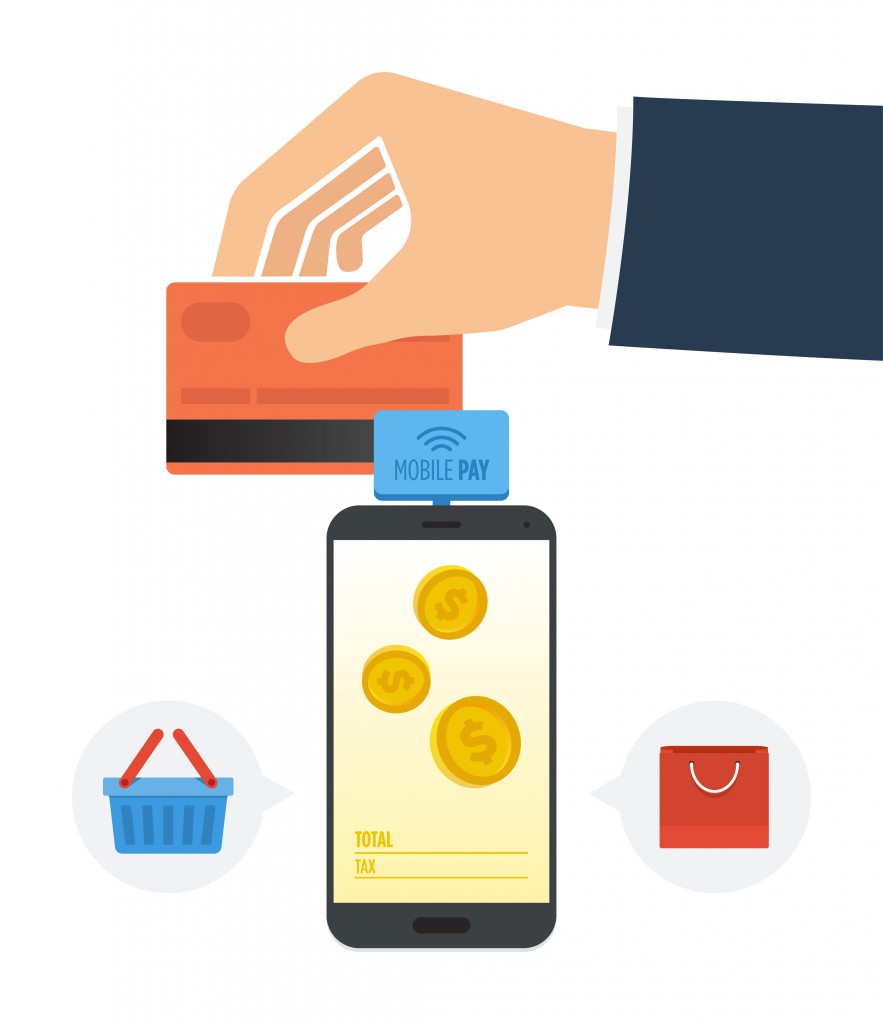Our culture of convenience is heavily dependent on the mobile device. It has permeated many aspects of daily life. This series will explore mobile usage and ultimately, its effect on the payments industry.
Mobile payments is a catchall term; it encompasses any payment involving a mobile device. The term is most frequently used to refer to mobile wallet payments and payments with mobile card readers. Below are the different types of mobile payments.
Mobile wallets
These mobile payments are those made by a mobile device by a consumer, using a mobile wallet app such as Google Wallet or Samsung Pay. Consumers securely store credit card information on the apps, creating a virtual credit card, and pay with a simple tap on enabled terminals. Mobile wallet payments are facilitated by NFC (near-field communication), which allows two devices to transfer data (in this case, payment information) through radio signals once in close proximity to one another.
As mentioned in the previous post, millennials are strong advocates for this form of mobile payments. They’re digital natives, so millennials are more likely to embrace new payment methods than generations before them and have already started to do so. 44% of millennials would prefer to use mobile phones to pay rather than cash, particularly for smaller purchases.
But beyond millennials, the benefits of these mobile payments extend to all consumers. In today’s fast-paced culture of convenience, shoppers value speed, ease, and security. The more streamlined you can make the purchasing experience, the more likely you are to gain loyalty. For merchants, it’s more the matter of keeping up with the times. More and more consumers are utilizing mobile wallets and more businesses are enabling their terminals to accept them. Your business needs to adapt by letting your customers pay the way they want – or else they won’t hesitate to take their business elsewhere.
Mobile card readers
These are payments are taken on a mobile device by a merchant with a mobile card reader. Merchants simply insert the reader/swiper/dongle into the audio jack of their mobile device to take payments anywhere, anytime. Taking payments with mobile card readers has a plethora of benefits for merchants:
- You expedite the checkout process when you transform mobile devices into POS systems, rendering the concept of a slow cash register and long lines obsolete. Fact: 86% of consumers will avoid a store if the wait time is too long.
- You get paid faster because your business is now able to go mobile which means you can take payments anywhere instantly. This is convenient if you make house calls, special deliveries, provide onsite services, etc.
- You get robust reporting that helps you better understand your business needs. With a payment processor that is cloud-based, all of your mobile transactions are automatically aggregated in one secure location.
Proprietary apps
These types of mobile payments are apps that companies have designed themselves. The most prolific among them being the Starbucks app, arguably the most successful with their mobile app payments representing 16% of all Starbucks transactions. Consumers can load money onto the app and then pay by scanning the QR (quick response) code.
These proprietary apps also provide the platform for mobile loyalty programs, abolishing paper-based stamp cards. The Starbucks mobile app is not only convenient but creates an incentive for consumers to use it by allowing them to collect stars towards a free drink.
The crux of mobile payments is to bring speed and ease to paying, and Starbucks took that one step further by launching their mobile order and pay feature within their app. This means that using the app, coffee lovers can order and pay ahead of time and jump the line once they get there.
Payments within apps or mobile websites
The last type of payments includes both payments that are made within apps and on mobile websites. The latter reinforces why mobile optimization is so important for businesses, especially eCommerce ones. Consumers are on their devices constantly; 50% shop on smartphones and read reviews while browsing in-store. Once consumers are ready to purchase, they’ll simply go through the online checkout process on their mobile device.
Apple Pay is a mobile wallet but you can also use it for purchases made within apps (such as Airbnb). Once you check out within an app, consumers choose Apple Pay as a payment method, and their information such as shipping and billing address is automatically filled out. Then, they simply confirm the purchase with TouchID (fingerprint) authentication.
